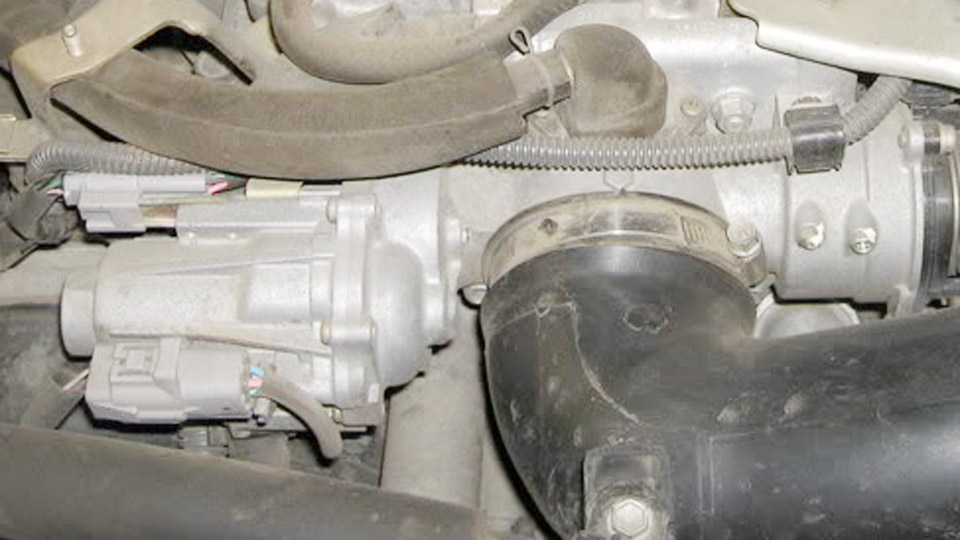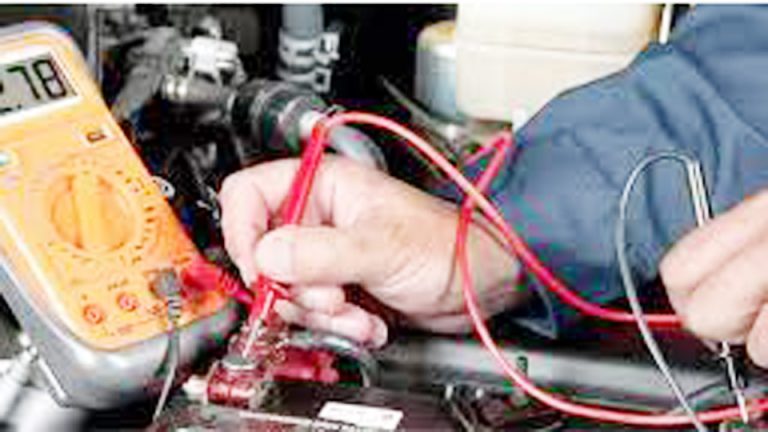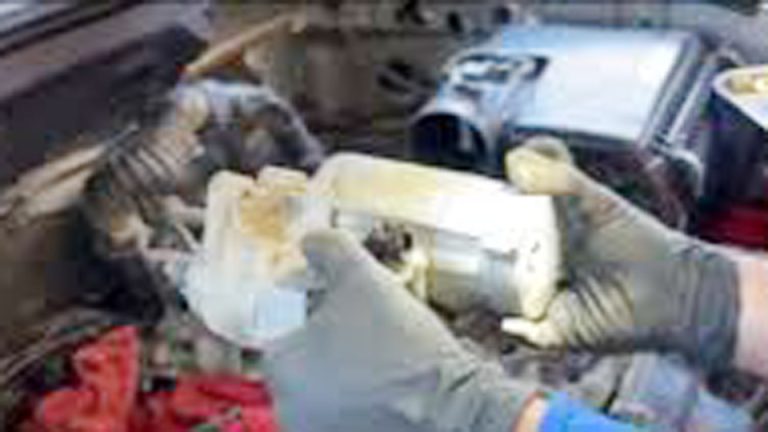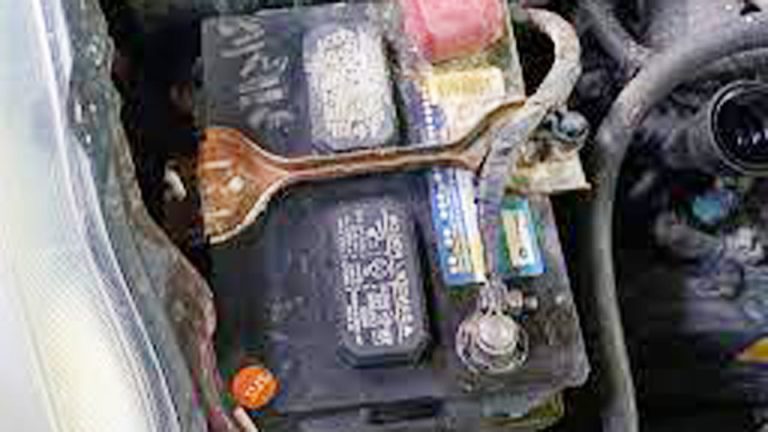A few years ago, my old Toyota started giving me trouble—turn the key, and sometimes it’d start right up, other times… nothing but a click. I immediately thought the starter was shot and braced myself for an expensive replacement.
But before I shelled out the cash, I decided to do a little digging under the hood—and I’m glad I did. Turns out, the problem wasn’t the whole starter, just a worn-out solenoid contact, which I was able to fix for a fraction of the cost.
If you’re driving a Toyota and your starter’s acting up, don’t assume you need to replace the whole unit just yet. From personal experience, I’ve learned that a few basic tools, a little patience, and the right steps can bring that starter back to life without a full replacement.
n this guide, I’ll show you exactly how I fixed mine, step-by-step, so you can save money and get back on the road—without replacing more than you have to.

Image by yotatech
Understanding the Toyota Starter System
The starter motor is like the morning coffee for your Toyota’s engine—it gets things going. When you turn the ignition, the starter uses battery power to spin the engine’s crankshaft, kicking off the combustion process.
It’s a small electric motor with a solenoid (a magnetic switch) that pushes a pinion gear into the flywheel to crank the engine. Once the engine starts, the starter disengages, and you’re good to go.
Toyotas, like my old ’98 Corolla, are known for their reliability, but their starters can still act up. Common issues include worn brushes, dirty contacts, or electrical gremlins, and many of these can be fixed without swapping out the whole unit. I’ve saved a few starters in my time, and I’m excited to share the tricks I’ve learned.
Signs Your Toyota’s Starter Needs Fixing
Before we dive into fixes, let’s make sure the starter’s the problem. Here’s what I look for when diagnosing starter issues:
- Clicking Noise: You turn the key, and all you get is a single click or rapid clicking. This usually means the solenoid is engaging, but the motor isn’t turning.
- No Crank, No Start: The engine doesn’t even try to turn over, even with a good battery.
- Slow Cranking: The engine turns over sluggishly, like it’s struggling to wake up.
- Grinding Noise: A grinding sound could mean the starter’s gear isn’t meshing properly with the flywheel.
- Intermittent Starting: Sometimes your Toyota starts fine; other times, it’s a no-go.
I remember when my neighbor’s Tacoma started acting up. It’d start fine in the morning but refuse to budge after a quick store run. After some poking around, we found a loose connection that was an easy fix—no new starter needed.
Tools You’ll Need to Fix Your Starter
Before you start, gather some basic tools. I’ve done these repairs in my driveway with stuff I already had in my toolbox. Here’s what you’ll need:
- Socket set and ratchet (usually 10mm–14mm for Toyota starters).
- Screwdrivers (flathead and Phillips).
- Wire brush or sandpaper for cleaning contacts.
- Multimeter to test electrical connections.
- WD-40 or electrical contact cleaner.
- Torque wrench for reassembly.
- Jack and jack stands (if the starter’s hard to reach).
- Safety gloves and glasses—trust me, you don’t want grease in your eyes.
If you’re working on a specific Toyota model, check your owner’s manual for the starter’s location. On my Corolla, it was right under the battery tray, but on a 4Runner, it might be tucked near the transmission.
Step-by-Step Guide to Diagnosing the Problem
Let’s figure out what’s wrong before we start fixing. Here’s how I approach diagnosing a Toyota starter issue:
Check the Battery First
A weak battery can mimic a bad starter. I’ve made this mistake before—replaced a starter only to realize the battery was the culprit. Use a multimeter to check the battery voltage. It should read around 12.6 volts when the car’s off. If it’s below 12 volts, charge or replace the battery.
Also, inspect the battery terminals for corrosion. A quick scrub with a wire brush and some baking soda paste can work wonders.
Test the Starter Relay
The starter relay is a small component in your Toyota’s fuse box that sends power to the starter. If it’s faulty, the starter won’t get juice. Swap the relay with another identical one in the fuse box (like the horn relay) and try starting the car. If it works, replace the relay—they’re cheap, about $10–$20.
Inspect Electrical Connections
Loose or corroded connections can stop the starter from working. Check the positive and negative cables at the battery and the wires at the starter itself. On my friend’s Rav4, a loose ground wire was the issue. A quick tighten with a wrench, and it was good as new.
Tap the Starter (The Old Trick)
This is a classic mechanic’s trick. If the starter’s brushes or solenoid are sticking, a gentle tap with a hammer or wrench can sometimes free them up. Locate the starter (usually a cylindrical metal piece near the engine’s bottom), and give it a few light taps while someone tries to start the car. I’ve revived starters this way on older Toyotas, but it’s a temporary fix—don’t rely on it long-term.
Listen for Solenoid Action
When you turn the key, listen for a click from the starter. If you hear it but the engine doesn’t crank, the solenoid is likely working, but the motor itself is the issue. No click? The solenoid might be bad, which we can fix without replacing the whole unit.
Common Starter Fixes Without Replacement
Now that we’ve narrowed down the problem, let’s try some fixes. These are repairs I’ve done on Toyotas that saved me from buying a new starter, which can cost $100–$500 plus labor.
Clean the Starter’s Electrical Contacts
Dirty or corroded contacts can prevent the starter from getting enough power. Here’s how I do it:
- Disconnect the battery’s negative terminal to avoid shocks.
- Locate the starter and remove the electrical connections (usually one or two bolts and a couple of wires).
- Use a wire brush or sandpaper to clean the terminals on the starter and the wire connectors.
- Spray with electrical contact cleaner for good measure.
- Reconnect everything tightly and test the car.
I fixed a Highlander’s starter this way. The contacts were caked in grime, and after a quick clean, it fired right up.
Rebuild the Solenoid
If the solenoid is the issue (no click when you turn the key), you can often rebuild it. Here’s what I do:
- Remove the starter from the car (usually 2–3 bolts and a few wires).
- Take off the solenoid (it’s the smaller cylinder attached to the starter motor).
- Open the solenoid casing—be careful, as small parts can pop out.
- Clean the plunger and contacts with sandpaper or a wire brush.
- Check the solenoid’s coil with a multimeter for continuity. If it’s broken, you’ll need a new solenoid (about $20–$50), but that’s still cheaper than a whole starter.
- Reassemble, reinstall, and test.
I rebuilt the solenoid on my Corolla’s starter years ago, and it lasted another 50,000 miles. It’s a bit fiddly, but it’s satisfying to save a couple hundred bucks.
Replace Worn Brushes
The starter motor’s brushes transfer electricity to the spinning armature. If they’re worn, the motor won’t turn. Here’s how to fix them:
- Remove the starter from the car.
- Disassemble the motor (usually a few screws hold the end cap).
- Check the brushes—they’re small carbon blocks with wires. If they’re shorter than 1/4 inch, they’re worn out.
- Source replacement brushes for your Toyota’s starter (about $10–$30 online or at an auto parts store).
- Solder or clip the new brushes in place, following the original setup.
- Reassemble and reinstall.
I did this on a friend’s Tacoma, and it was like giving the starter a new lease on life. Brushes are a common wear item, especially on high-mileage Toyotas.
Lubricate the Pinion Gear
If the starter’s gear isn’t engaging the flywheel properly, it might just need some lubrication. Remove the starter, clean the pinion gear with a rag, and apply a small amount of high-temperature grease. Be careful not to overdo it—too much grease attracts dirt. I used this trick on a 4Runner, and it stopped the grinding noise instantly.
When to Stop and Replace the Starter
Sometimes, the starter is too far gone to fix. If the motor’s windings are burnt out, the armature is damaged, or the gear teeth are stripped, you’re better off replacing the whole unit. I’ve seen this on high-mileage Toyotas, like a 200,000-mile Tundra I worked on.
The starter was so worn that no amount of cleaning or rebuilding would help. A new aftermarket starter cost $120, and it was worth it for the reliability.
To decide, test the starter with a multimeter after trying the fixes above. If there’s no continuity in the motor or the solenoid, or if it’s physically damaged, it’s time to replace it. But if you’re getting some life out of it after cleaning or rebuilding, you’ve saved yourself a trip to the parts store.
Model-Specific Tips for Toyotas
Toyotas are built differently depending on the model, so here are some tips based on my experience:
| Toyota Model | Starter Location | Common Issues | Fix Difficulty |
|---|---|---|---|
| Corolla | Under battery tray, driver’s side | Dirty contacts, worn brushes | Easy–Moderate |
| Camry | Near transmission, passenger side | Solenoid failure, loose wiring | Moderate |
| Tacoma | Under engine, near transmission | Pinion gear sticking, brush wear | Moderate–Hard |
| RAV4 | Below intake manifold | Corroded connections | Hard |
| 4Runner | Near transmission, under vehicle | Overheating, gear wear | Hard |
For example, on a Camry, the starter’s a bit tricky to reach, so you might need a long extension for your socket wrench. On a Tacoma, jack up the truck to get better access. Always check your owner’s manual for specifics.
Practical Tips to Prevent Starter Issues
Want to keep your Toyota’s starter in tip-top shape? Here’s what I’ve learned from years of wrenching:
Keep Your Battery Healthy: A weak battery forces the starter to work harder, wearing it out faster. Test your battery every couple of years.
Clean Connections Regularly: Corrosion at the battery or starter terminals is a killer. A quick scrub with a wire brush every oil change can prevent problems.
Avoid Short Trips: Constant start-stop driving wears out the starter faster. Combine errands when you can.
Listen for Early Signs: Clicking, grinding, or slow cranking are your Toyota’s way of saying, “Help me!” Address them early to avoid a full failure.
Use Quality Parts for Repairs: If you replace brushes or a solenoid, go for reputable brands. Cheap parts fail quickly, and I learned that the hard way.
I always tell my friends to treat their starter like a loyal dog—give it a little care, and it’ll keep working for you.
Save Money and Keep Your Toyota Running
Fixing a starter without replacing it on a Toyota is like solving a puzzle—it takes patience, but the payoff is huge. Whether it’s cleaning contacts, rebuilding the solenoid, or swapping out brushes, you can often bring your starter back to life for less than $50 and a couple of hours in the garage.
By diagnosing the problem carefully and using the right tools, you can save hundreds compared to a new starter or a shop visit. There’s nothing more satisfying than turning the key and hearing your Toyota roar back to life because of your handiwork.
Frequently Asked Questions
Can I drive my Toyota if the starter is acting up?
If it’s starting intermittently, you can drive, but it’s risky. A failing starter could leave you stranded if it gives out completely. I had a buddy push his luck with a flaky starter, and it died at the worst possible time—in a busy parking lot. Fix it sooner rather than later.
How do I know if it’s the starter or something else?
If your battery’s good (12.6 volts) and you hear clicking or no cranking, the starter’s likely the issue. Test the relay and connections to rule them out. I once thought my Corolla’s starter was bad, but a $5 fuse fixed it—always check the simple stuff first.
How long does it take to fix a starter without replacing it?
Cleaning contacts takes about 30 minutes. Rebuilding a solenoid or replacing brushes can take 1–2 hours, depending on your skill and the model. My first solenoid rebuild took me two hours, but now I can do it in under one.
Are aftermarket repair parts okay for Toyota starters?
Yes, as long as they’re from a reputable brand. Brushes or solenoids from companies like Denso or Bosch work great. I’ve used aftermarket brushes on my Tacoma with no issues, but cheap no-name parts failed me once—stick with quality.
What if my fixes don’t work?
If cleaning, rebuilding, or tapping the starter doesn’t help, the motor itself might be toast. Test it with a multimeter for continuity. If it’s dead, a new or remanufactured starter is your next step. I had to replace my 4Runner’s starter after a rebuild didn’t cut it, but it was still cheaper than a shop job.




